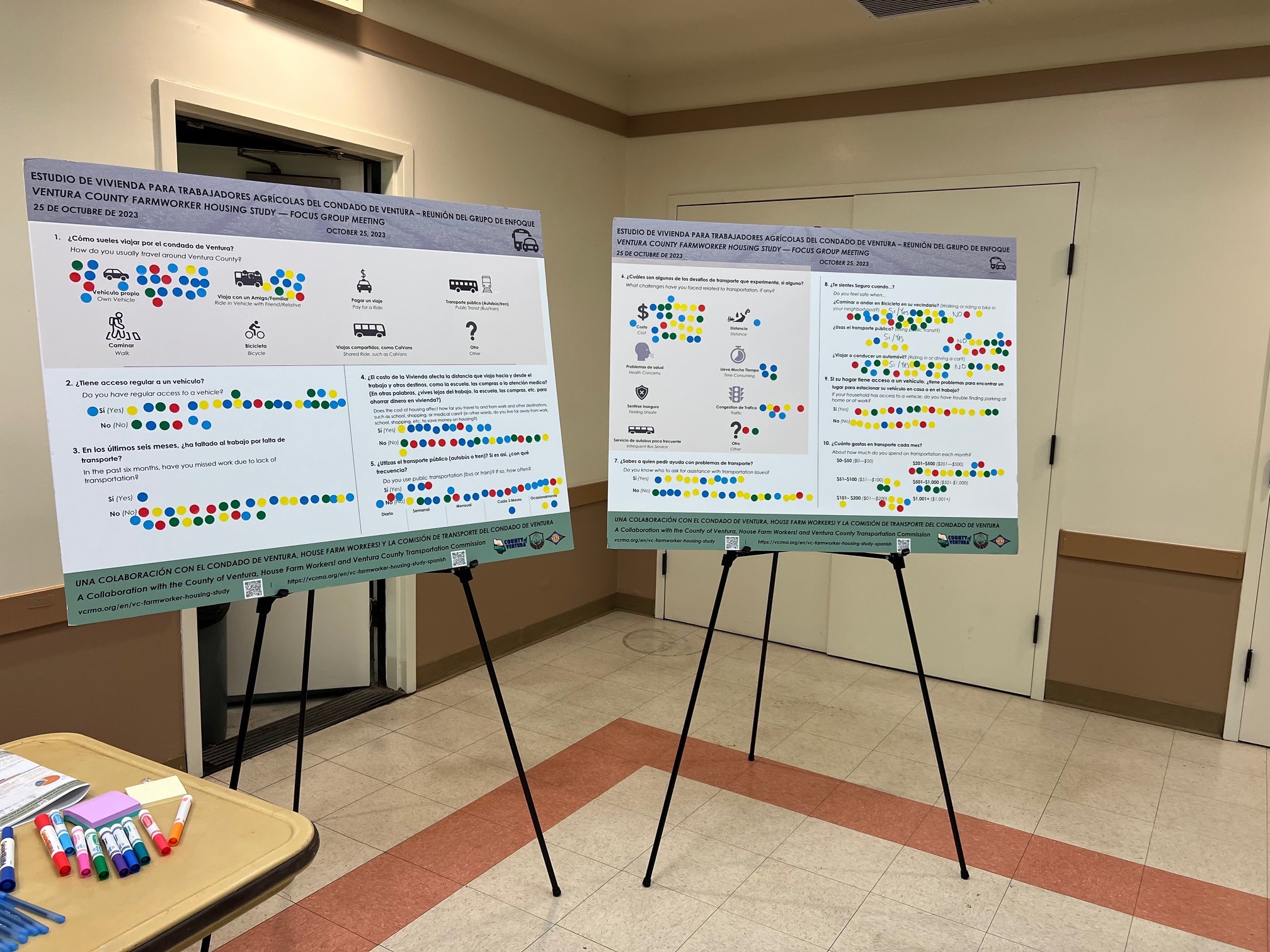Farmworker families provide insight into housing, transportation needs at community meeting
By John Krist
About 80 farmworkers and their family members turned out for a recent community meeting convened to gather information about their living conditions, transportation patterns and housing needs.
Hosted by the County of Ventura, in collaboration with the Ventura County Transportation Commission (VCTC) and the advocacy organization House Farm Workers! (HFW!), the Oct. 25 event was intended to supplement information gathered from more than 400 individual farmworker surveys. Those surveys, conducted during the spring and summer of 2023, constitute the first phase of a comprehensive “Ventura County Farmworker Housing Study and Action Plan.”
The project is being coordinated by the county of Ventura, all 10 local cities and VCTC, in partnership with HFW! The project will fulfill the following commitment made by the Board of Supervisors in its 2021 adoption of the Housing Element of the County General Plan:
“The County, working with advocacy groups, agricultural organizations and Ventura County cities, will: (1) take on a coordinating role to seek funding for, and to implement, a countywide survey of farmworkers, employers, and housing providers to further define housing conditions, needs and barriers to farmworker housing; and, (2) utilize the survey results to develop targeted programs and strategies to address the identified housing needs of farmworkers and to support agricultural businesses with a stable and healthy workforce.”
The project is guided by an Advisory Council of representatives of numerous community-based organizations, agricultural business interests, and public agencies. The principal project consultant is BAE Urban Economics. Funding sources include the county, local cities, VCTC, HFW!, the Southern California Association of Governments, and the California Department of Housing and Community Development. Information regarding the project is available at vcrma.org/en/vc-farmworker-housing-study.
During the Oct. 25 meeting, attendees — 34 of whom were farmworkers — made their way through five stations set up inside Saticoy’s Jose Flores Community Center. At the first station, participants were shown a video available in five languages (Spanish, Mixteco, Purepecha, Zapoteco and English) about the farmworker housing survey conducted earlier this year. At subsequent stations, participants responded to questions related to transportation, housing and social services. Assistance was provided by multi-lingual staff members from the County Planning Division, the Farmworker Resource Program in the County Department of Health and Human Services, the County Health Care Agency, VCTC and HFW!
As an incentive to participate, attendees were offered a dinner catered by local restaurant Los Comales, dessert pastries from Noah’s Bagels, Starbucks coffee, water bottles, an art activity center hosted by the Santa Paula Art Museum, and a $50 cash payment.
Results of the overall farmworker surveys are still being compiled and analyzed, with a final report expected early in 2024. But for VCTC staff, the information gathered on Oct. 25 has already provided valuable insights into the mobility challenges farmworkers and their families face in Ventura County.
“About one-third of participants said that the cost of housing affects how far they travel to work, school, and other destinations, which suggests that providing more affordable housing near employment opportunities and other destinations may reduce distances traveled,” said Amanda Fagan, VCTC’s Director of Planning and Sustainability. “The majority of participants cited cost of transportation as a challenge. Half of respondents indicated that they spend between $201 and $500 per month on transportation, and four respondents indicated that they spend more than $500 per month on transportation.”
Fagan said the information generated by the event and the overall project survey will help guide VCTC’s future planning efforts.
“Housing, land use, and transportation are inextricably linked,” she said. “To solve our county’s transportation challenges and to meet local, regional, and state goals related to reducing greenhouse gas emissions associated with transportation, we must think about ways to better connect housing and transportation by providing equitable transportation options that best serve the diverse needs of the community. The survey data and findings will be incorporated into various VCTC planning efforts, such as identifying unmet transit needs and comprehensive multimodal transportation planning.”
Project information is available in English and Spanish at vcrma.org/en/vc-farmworker-housing-study.

